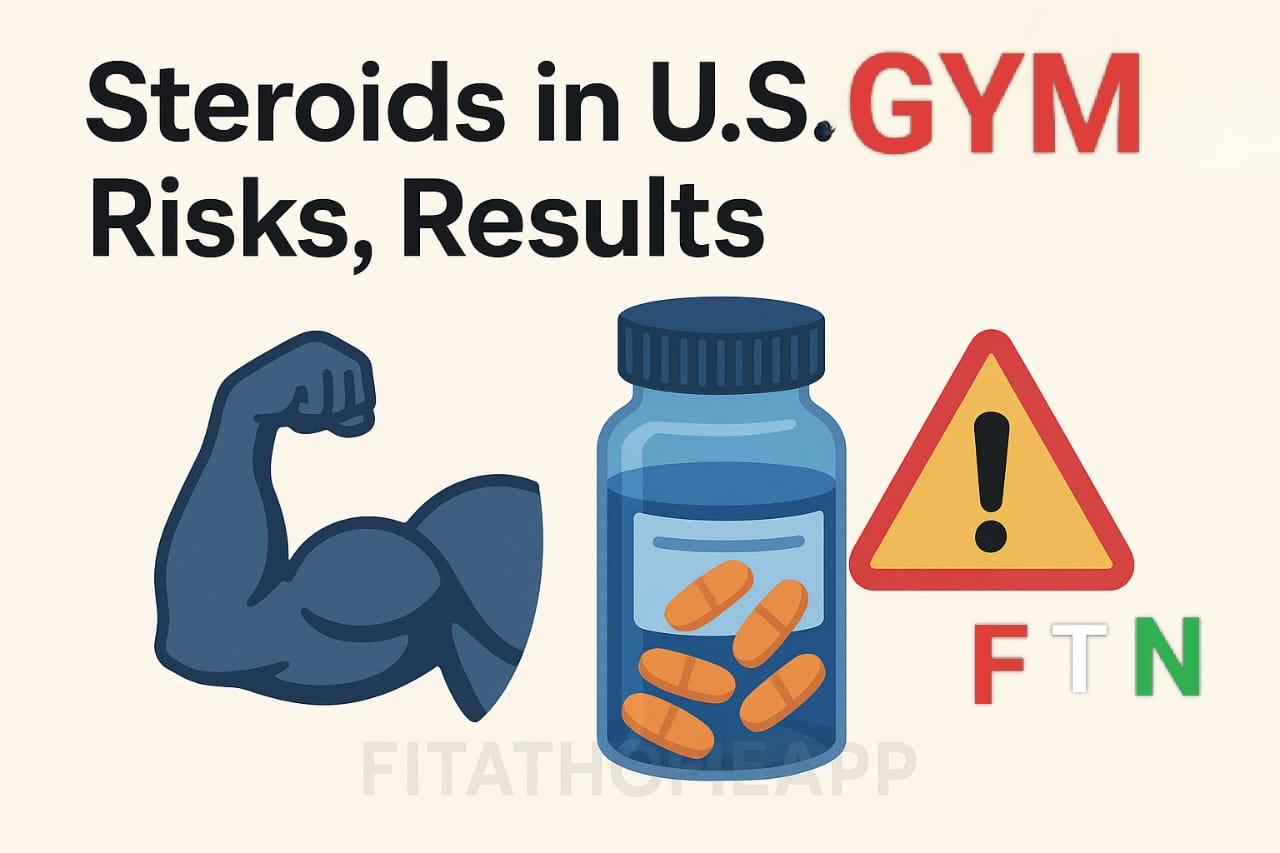🏋️♂️ Introduction: Steroids and the Modern Fitness Culture
Steroids have become a controversial topic in gyms across the United States. What was once considered taboo is now a frequent point of discussion among athletes, personal trainers, and even everyday gym-goers. The appeal of rapid muscle gain and dramatic body transformation has pushed many to explore these substances, often without fully understanding the consequences.
Social media has further normalized steroid use, with influencers showcasing chiseled physiques that may not always be naturally achievable. Add to this the pressure of competition—whether in sports or bodybuilding—and it becomes clear why so many people feel tempted by the shortcut that steroids seem to offer.
But behind the pumped-up muscles and quick results lies a complex reality: one filled with risks, legal concerns, and deep ethical questions.
🧬 What Are Steroids, Really?
Steroids are a group of synthetic substances that imitate hormones naturally produced by the body, especially testosterone. There are two main types:
Anabolic steroids: used to increase muscle mass and improve performance.
Corticosteroids: used to reduce inflammation and treat medical conditions like arthritis or asthma.
Anabolic steroids help the body build muscle faster by promoting protein synthesis in cells. While they do have legitimate medical uses—like treating hormone deficiencies—they’re often misused in fitness circles for performance enhancement.
This misuse is where problems begin. Without medical supervision, these substances can disrupt the body’s natural hormone balance and cause a host of health complications.
🤔 Why Do Gym-Goers Turn to Steroids?
The reasons behind steroid use are more than just physical—they’re deeply psychological and social.
✅ 1. Chasing the “Ideal” Body
Many people are bombarded with images of perfectly sculpted bodies online. Comparing themselves to influencers, athletes, or even friends can cause feelings of inadequacy. For some, steroids seem like the only way to “catch up.”
✅ 2. Competitive Pressure
In sports or bodybuilding, performance matters. Some athletes believe that using steroids is the only way to stay ahead. When competition is fierce, ethics often take a backseat to results.
✅ 3. Faster Progress
Steroids promise rapid muscle gains that would otherwise take years to achieve. For impatient or frustrated lifters, this promise can be too tempting to resist.
Yet, many users later find that the short-term benefits come at long-term costs—physically, mentally, and emotionally.
⚠️ The Hidden Dangers of Steroid Use
Steroids may deliver quick results, but they also carry serious health risks—many of which are not immediately obvious.
💔 Cardiovascular Risks
Increased blood pressure
Elevated bad cholesterol (LDL)
Higher risk of heart attacks and strokes
🧬 Hormonal Disruption
In men: testicular shrinkage, infertility, and lowered sperm count
In women: deepened voice, irregular periods, and unwanted hair growth
🧠 Mental Health Effects
Mood swings, aggression (“roid rage”)
Anxiety, depression, or even psychosis
Psychological dependence on continued use
🧪 Liver Damage
Especially with oral steroids, users may experience:
Liver toxicity
Blood-filled cysts
Potential liver failure
Despite knowing the risks, many users continue taking steroids—chasing gains while ignoring the warning signs.
💡 Expectations vs. Reality: What Steroids Really Deliver
It’s true—steroids can deliver fast muscle growth. But reality doesn’t always match expectations.
What You Might Expect:
Rapid bulking
Fat loss
Superhuman strength
Instant aesthetics
What Often Happens:
Temporary muscle gains that vanish when use stops
Plateaus after a few cycles
Dangerous side effects that outweigh the benefits
Worse, some users become psychologically addicted to their “enhanced” look and struggle to return to natural training methods.
⚖️ Are Steroids Legal in the U.S.?
In the United States, anabolic steroids are classified as Schedule III controlled substances. This means:
It’s illegal to possess or distribute them without a prescription
Unlawful use can lead to fines, jail time, and a criminal record
Even for medical purposes, doctors only prescribe anabolic steroids for very specific health conditions—not for bodybuilding or athletic enhancement.
Each state has its own laws, too. Some impose stricter penalties, so what may be legal in one region could carry harsh consequences in another.
🌱 Natural Alternatives That Actually Work
Fortunately, there are safe and effective alternatives to steroids that support long-term fitness goals.
🥦 Nutrition Matters
Eat plenty of lean protein (chicken, fish, eggs, tofu)
Prioritize complex carbs and healthy fats
Stay hydrated and avoid processed junk
💊 Natural Supplements
Protein powder for muscle repair
Creatine to boost strength
BCAAs for recovery
Beta-alanine for endurance
🏋️♂️ Smart Training
Focus on progressive overload (gradually increasing weight)
Mix in compound movements like squats, deadlifts, and pull-ups
Get enough rest and sleep—recovery builds muscle, too
With consistency and dedication, natural methods offer sustainable progress—minus the dangerous side effects.
🗣 Real Talk: Stories from the Gym Floor
John’s Story: Regret and Recovery
“Steroids gave me insane gains, but I lost myself in the process. I became isolated, angry, and eventually had to deal with serious health scares.”
Sarah’s Story: Proudly Natural
“It took longer, but I built my body without shortcuts. I’ve avoided the health problems my steroid-using friends are now facing.”
Mike’s Confession: A Culture of Pressure
“It wasn’t even about winning—it was about fitting in. Steroids were just part of the gym vibe. Now I realize it wasn’t worth the risk.”
These stories remind us that everyone has a choice, and not all roads lead to a happy ending.
🙌 Moving Forward: Building Strength Without Steroids
True fitness isn’t just about looking strong—it’s about being healthy inside and out.
To create a better future for gym culture, we must:
Promote honest conversations about steroids and body image
Support natural athletes and celebrate real progress
Educate newcomers about sustainable methods
Reject toxic comparisons and unrealistic expectations
You don’t need steroids to be strong, fit, or successful. What you need is:
A smart plan
A support system
And a commitment to doing it the right way
🏁 Final Thoughts
Steroids may offer short-term rewards, but they come with long-term consequences. From health complications to legal trouble, the risks are real—and often irreversible.
But the good news? Real, lasting fitness is possible without them. With patience, discipline, and the right support, anyone can build the body they want naturally—and stay healthy in the process.
Let’s change the conversation. 💬
Let’s value health over hype. 💚
Let’s build strength the natural way. 💪
🎥 Watch this raw documentary for a stark look at what really happens behind the scenes:
My Personal Insight – “Inside the Dangerous World of Bodybuilding”
This documentary sheds light on the harsh reality many don’t see: behind chiseled physiques often lies a story of addiction, broken health, and lost identity. Bostin Loyd’s honesty about performance-enhancing drugs gives your article the depth of real-world experience.
I value how the film doesn’t just show muscles—it shows the emotional cost of chasing extremes. To further strengthen the message, I would welcome follow-up commentary from medical or mental health professionals on long-term recovery.
In essence, this video underscores your central message: steroid shortcuts may create size—but they come at the cost of wellbeing. Natural discipline, not dangerous enhancement, is what builds true strength.

